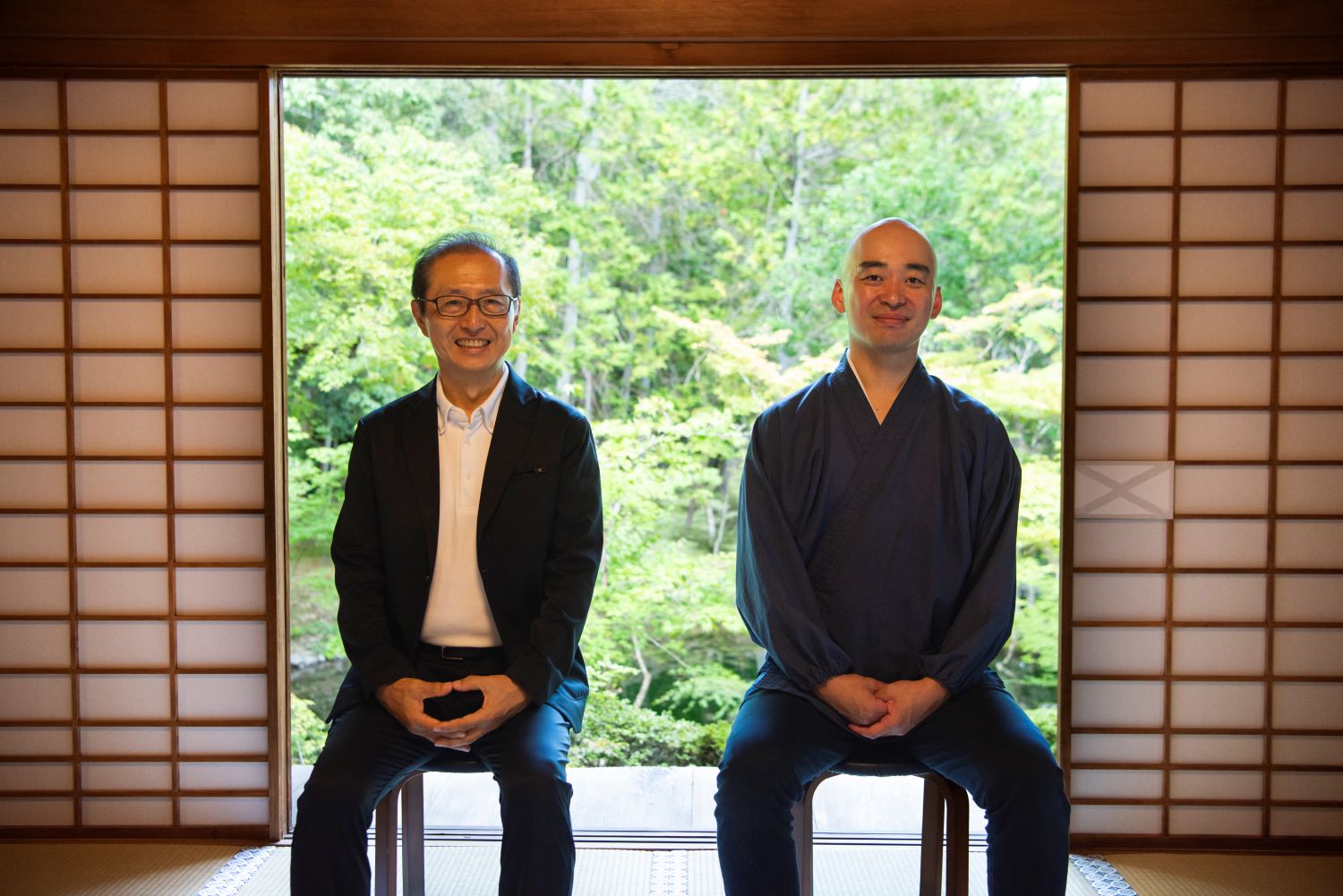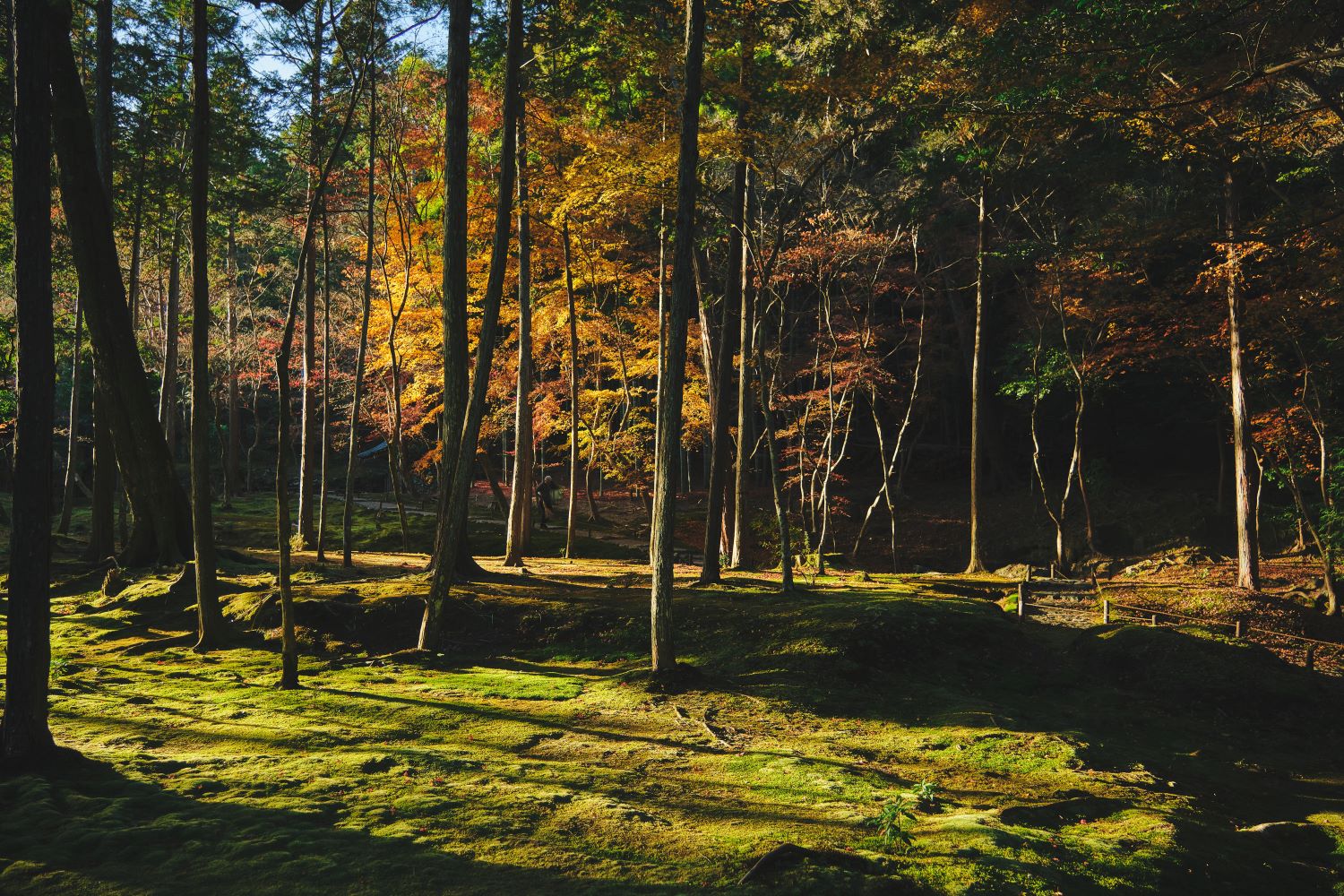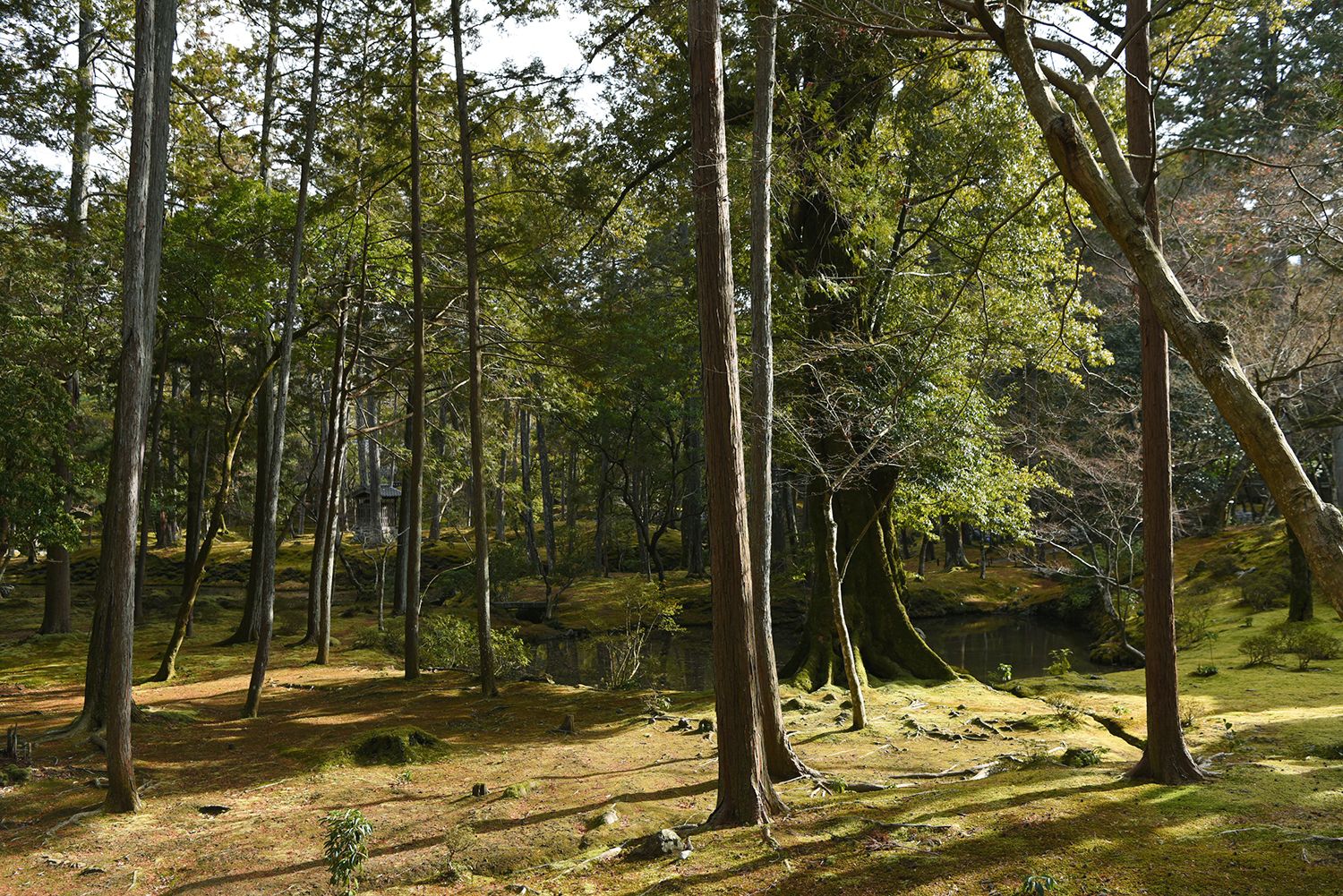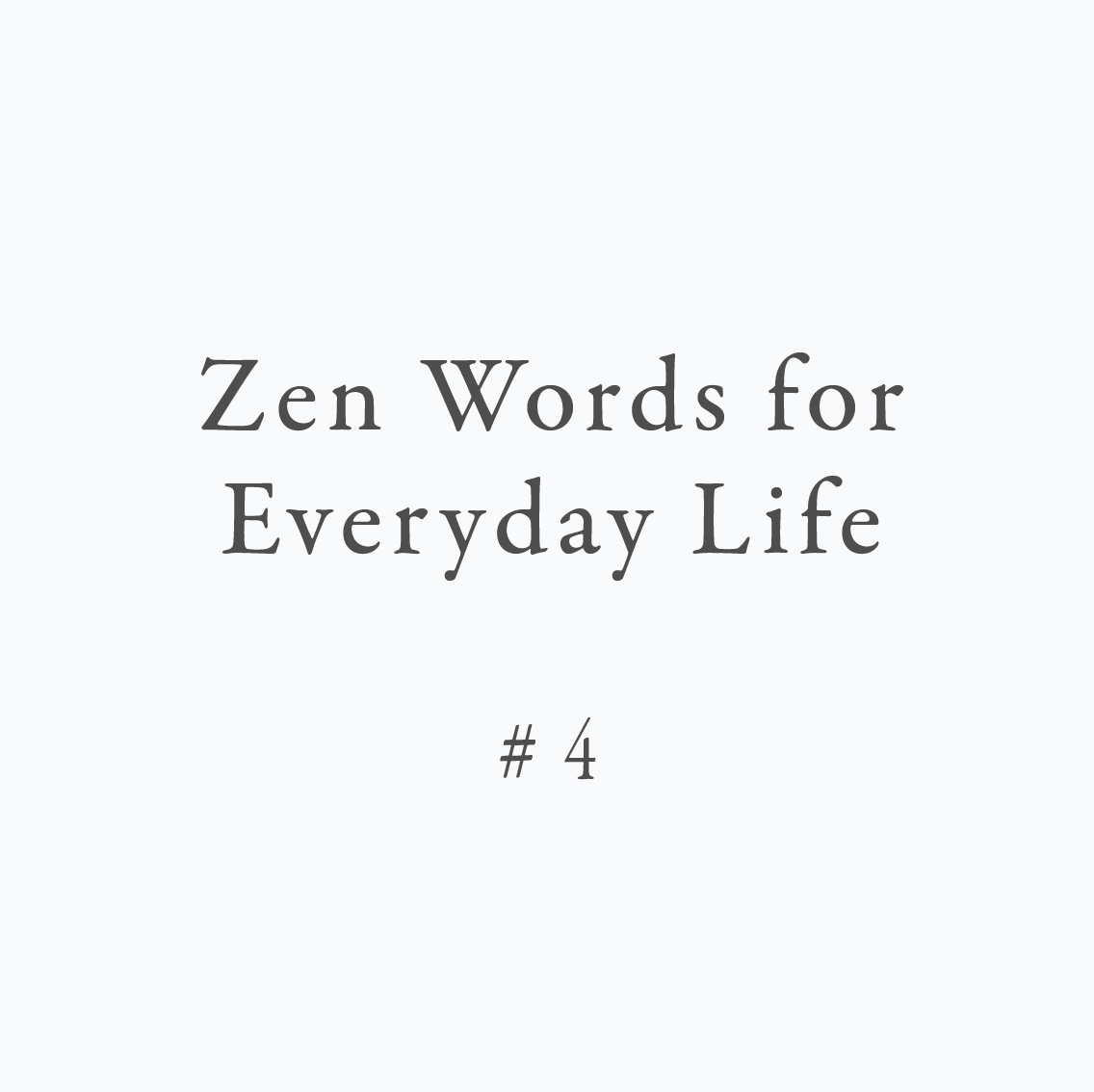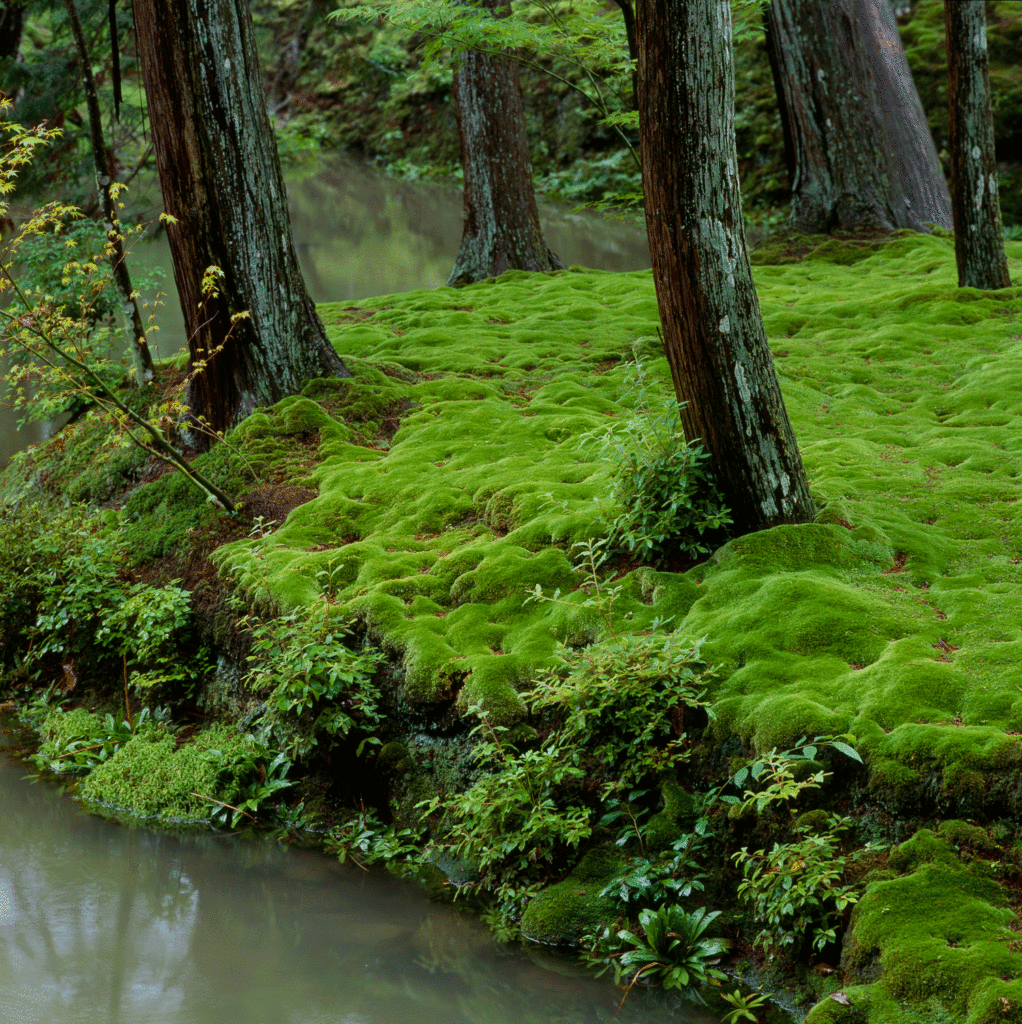2025.2.10
Crossroads of Saihoji
(First Part)
Mitachi Takashi & Fujita Ryuko
Origins and Journeys at Saihoji
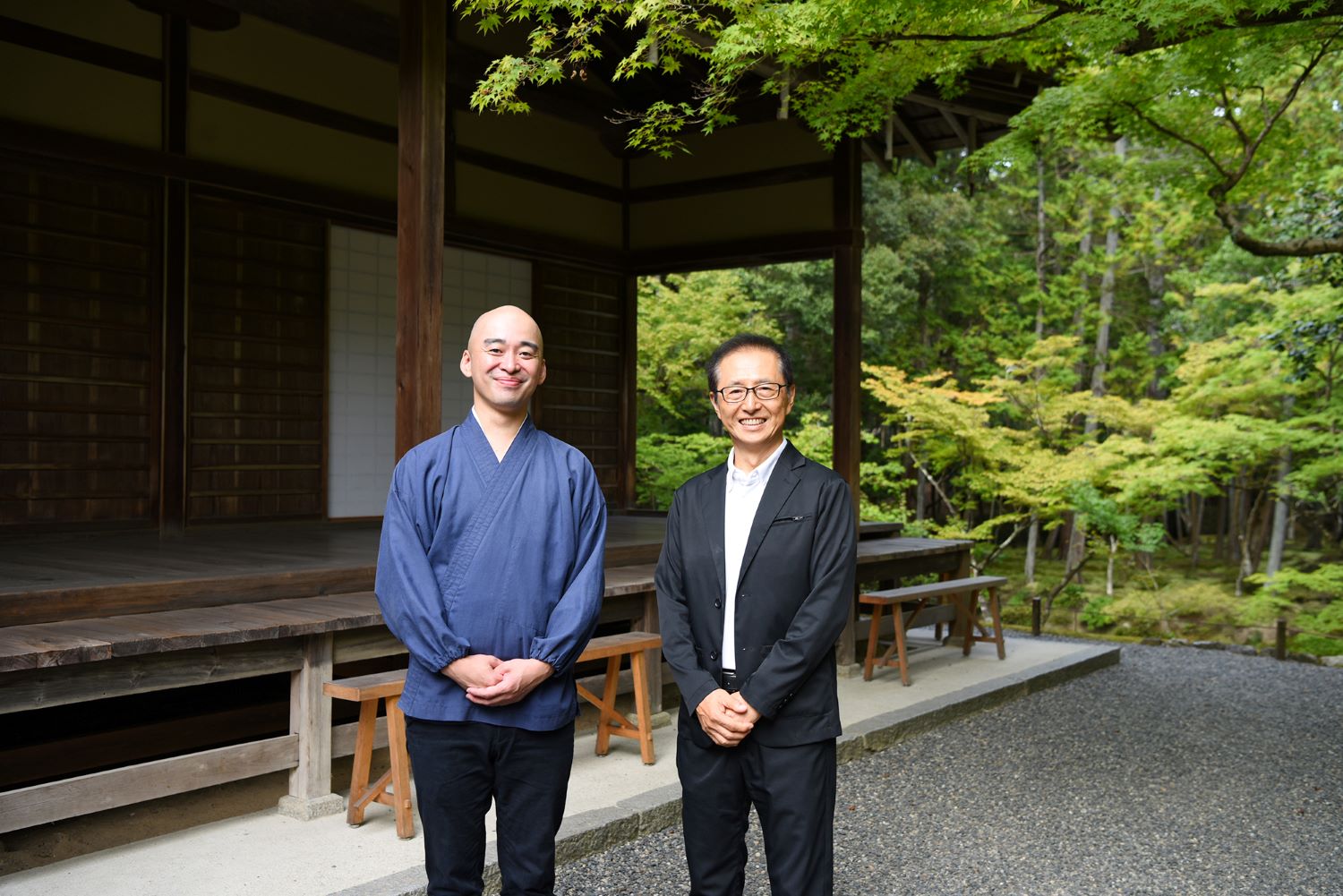
In 2031, Saihoji celebrates 1,300 years since its founding. The reason it continues to be loved by so many people, after all these centuries, is not merely due to its physical beauty. There is something deeper that attracts people. Saihoji senior adviser Mitachi Takashi and Buddhist monk Fujita Ryuko had an open discussion offering a variety of perspectives to uncover what that is.
Mitachi Takashi
Saihoji senior adviser. Distinguished Professor, Kyoto University Graduate School of Management. Holds a BA from Kyoto University and an MBA from Harvard Business School. After working for Japan Airlines, Mr. Mitachi joined The Boston Consulting Group (BCG) in 1993, where he served as co-chair of the Japan office and member of the BCG Worldwide Executive Committee. He currently teaches at Kyoto University’s Graduate School of Management and sits on corporate boards as an outside director. He is also a board member of the Ohara Museum of Art.
Standing on layers of time
Today, we welcome Mr. Mitachi and Mr. Fujita to speak at length on what it is that draws people to Saihoji. Mr. Mitachi has served as a senior adviser to Saihoji since April 2024. We asked him what led him to take on this role.
Mitachi: I worked in consulting for many years before I started teaching at Kyoto University’s business school. Some of my students were connected to Saihoji, and that is where the relationship started.
Fujita: As the person responsible for taking care of the temple, I have to think about the future of Saihoji, and Mr. Mitachi helped me to verbalize what kind of place this is. Over the course of visiting the temple over and over again, he came to be quite fond of it. Our relationship deepened as we talked about what we would do with the temple in the future.

Mitachi: The garden at Saihoji is something quite extraordinary. There is something multi-layered of time here.
It will soon be 1,300 years since the temple was built, but the land beneath it has a history that stretches back far longer. First, it took millions of years for the Kyoto basin to form. This area is also home to several ancient kofun tombs. In other words, this has been a meaningful place for people for a very long time. To put it in today’s terms, there was a good energy flowing through here, water was accessible, and so on.
Later on, Prince Shotoku had a villa built in this area in the 7th century. After that, some highly renowned monks trained here.
Fujita: You’re referring to Honen Shonin and Muso Kokushi.
Mitachi: Yes. So, this place has overlapping time from different historical periods. As for the garden itself, this was where the first karesansui (dry landscape) garden was created in Japan. Later on, through wars and natural disasters, it became covered in moss, turning the original garden into the Moss garden. In other words, in this garden, there is a time for moss, for stones, and for trees. Human beings have helped it little by little to become the garden that it is today. I feel like I am standing on multiple layers of time because time flows in this way at Saihoji.
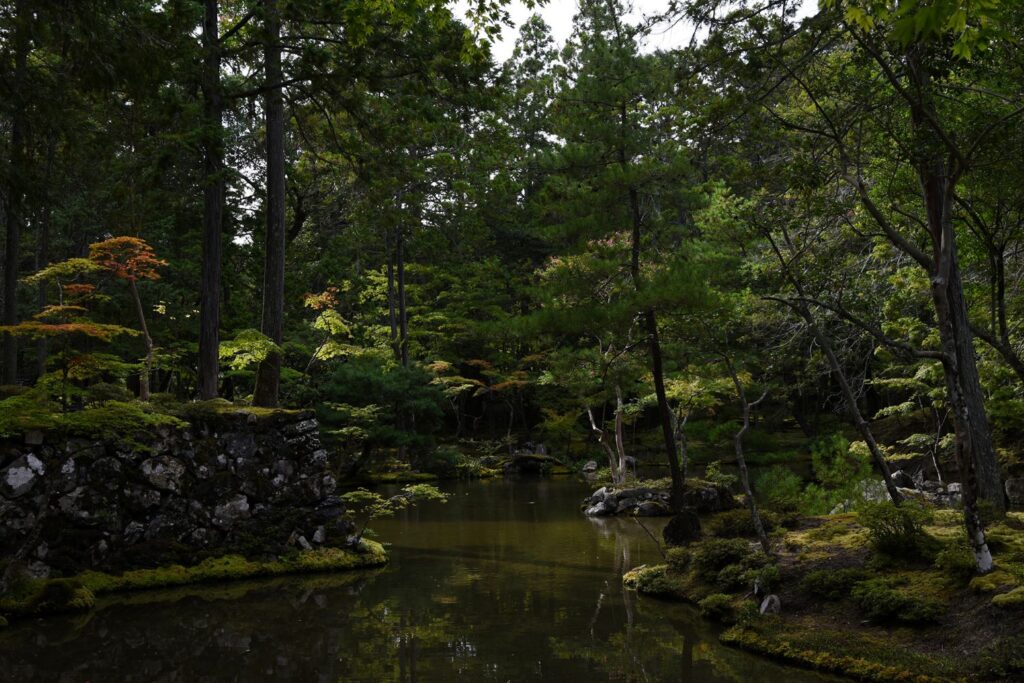
Fujita: One of the attractive things about Saihoji is that this multi-layered nature is accepted. But this disposition did not come about purely as the result of positive events in the temple’s history. We have had our fair share of trials and tribulations. There have been several floods here. People could not protect or take care of the temple, and it went into disrepair. However, you could also say that it was precisely because of the destruction and decay that Muso Kokushi came to restore it. Buddhism, by nature, has the magnanimity to accept such things. I think that is especially necessary in this day and age.
Mitachi: That’s why Saihoji is a special place, and not just beautiful to look at.
Walk and walk again, until you find what resonates with you
Fujita: The concept of Saihoji is “The Garden of Origins and Journeys.” It is a place where you can return to your own origins, bring your mind into harmony with yourself, and discover the inspiration to set out on a new journey. We chose this concept with that meaning in mind. What is the significance for you of coming to Saihoji and finding yourself?
Mitachi: When I walk through the garden, I hear various sounds of nature and faint voices within me.
You can hear leaves rustling against each other, tree branches shaking forcefully, and depending on the time of day, you might hear great numbers of birds singing and children running around somewhere off in the distance. There’s no particular thing that Saihoji tries to show people in this garden. We want people to hear the sounds, see the light and feel the air of that specific moment. If you can do so, you may suddenly find yourself at the origin of your own journey. Such things happen spontaneously here.
I believe that it is not natural for humans to concern themselves with petty, troublesome things. If you take a walk around this garden, moving one step at a time, and open up all of your senses, then you will come to realize that human beings are a part of nature. I think that is something unique about the garden at Saihoji.
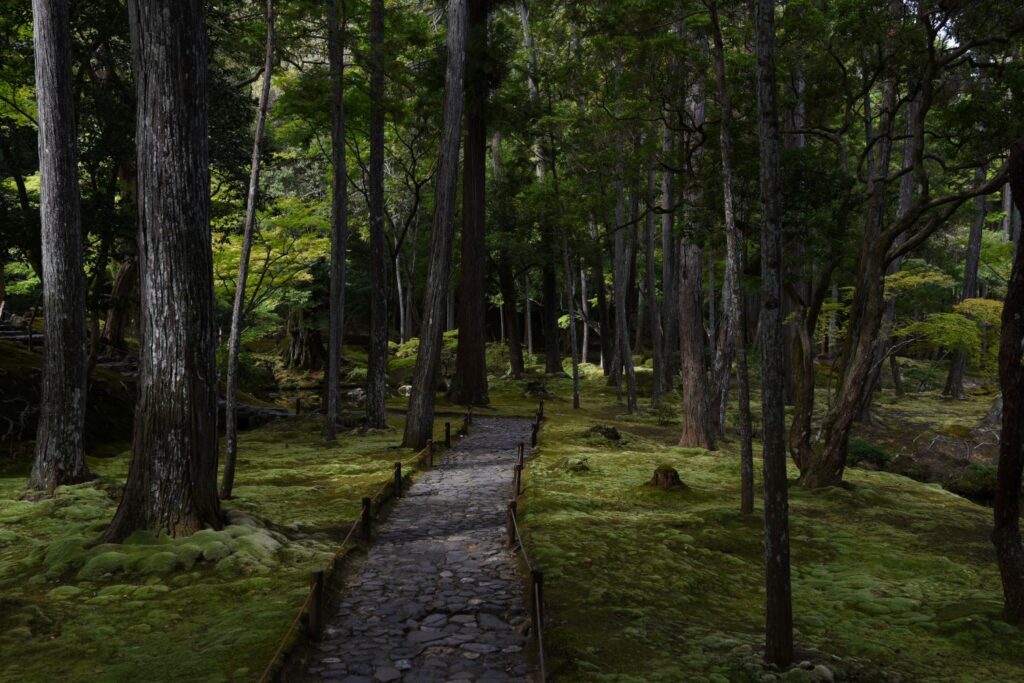
Fujita: That’s beautiful. I agree with you completely.
Mitachi: On top of that, it’s a Zen temple, and in Zen, you have to use your body. In Zen training, the first things you have to do are to sit and to participate in the physical work of samu. I believe it gets you moving down the path toward enlightenment by telling you to stop trying to reason your way through everything and simply take action. I feel that Zen and the garden work in synergy with each other, opening up the keen sensitivity and physicality that modern people have lost, and turning on our natural sensors.
Fujita: I think the other key point is to visit multiple times. I have been walking around this garden ever since I was a child. Even though I must have walked it tens of thousands of times by now, whenever I get stuck on something, I always come for another round. And when I do, I notice something new.
Mitachi: That’s great.
Fujita: When I practice zazen, I realize that I am worried or conflicted about something that actually has quite an obvious answer. I’m not sure how to express it, but there’s something good that comes out of simply going around this garden so many times.

Mitachi: You have a place to return to. That sounds wonderful.
Fujita: Mr. Mitachi, you have also visited the garden many times. Do you have any recommendations on how to enjoy the garden as you walk around it over and over again?
Mitachi: That’s a quite difficult question, because the first time in the garden, I am always overwhelmed by its beauty, and end up searching for the best spot to get the most beautiful view.
It’s natural to feel this way, but after visiting the temple several times, you begin to look for where your sensors are most open and you feel most comfortable. When you find that spot, stop for a moment. Take a breath, look around, and you will notice something that has escaped your attention until now—such as a row of decaying trees—and how it resonates with your heart.
Fujita: Walking around the garden is a physical activity, but it’s not something where you have a look and then you’re done. It doesn’t end with you snapping some shots for a photo composition. The photographer Domon Ken actually says that there is no place more difficult to photograph than Saihoji.
Mitachi: That’s interesting.
Fujita: He says that there’s no place from which to adequately capture the Moss Temple. Even a professional photographer will be unable to find that particular spot or object to encapsulate the essence of the temple so well that anybody can look at the photograph and know, “This is Saihoji Temple.” There are, of course, many factors at play, such as the season, one’s own physical condition on the day, one’s age, the state of one’s recent work, and so on. There is something fun about searching for the thing that resonates with you in a particular moment. There are countless answers in life, so it would be rather strange to say that when it comes to this garden, it’s enough to look at its composition, and that’s it. It is no exaggeration to say that there are as many answers to the garden as there are people, or if we take it a step further, there are as many answers as there are moments in time.
Mitachi: Yes, that’s right. If you can find two or three things that resonate with you within this limited amount of time—without looking for the “right answer”—then I think it has been very worthwhile. It means you have found your origin.

There is no magic solution
Next, I would like to discuss the garden as a journey. Speaking of journeys, I understand that Steve Jobs often visited Saihoji.
Fujita: That’s right. On that point, I wanted to ask you what the connection is between businessmen and Saihoji.
Mitachi: This is going to sound a little complicated, as I’m choosing my words carefully to avoid any misunderstanding, but Saihoji is actually not suited to businessmen seeking short-term inspiration and solutions. There are no magical solutions. As I mentioned earlier, if you can just find your own point of origin, then you will be able to find the right answers for yourself. People are born with the ability to choose what is right, but modern people have lost sight of it. Many people in the business world are furiously competing with rivals, just to survive. Such people would find it very valuable to have a “place to regain the abilities you ought to have.”
Some people might say that instead of embarking on journeys, we should hold simple training sessions on creativity. Such things do indeed have value, but they do not offer solutions in and of themselves. If you instead build up such experiences, you may find yourself thinking that whatever you’re searching for is already right there.
Fujita: You might get a faint glimmer of inspiration, and that could end up being part of your journey, but it’s not the journey itself. You shouldn’t stop there.
Mitachi: That’s exactly right. You shouldn’t stop there.
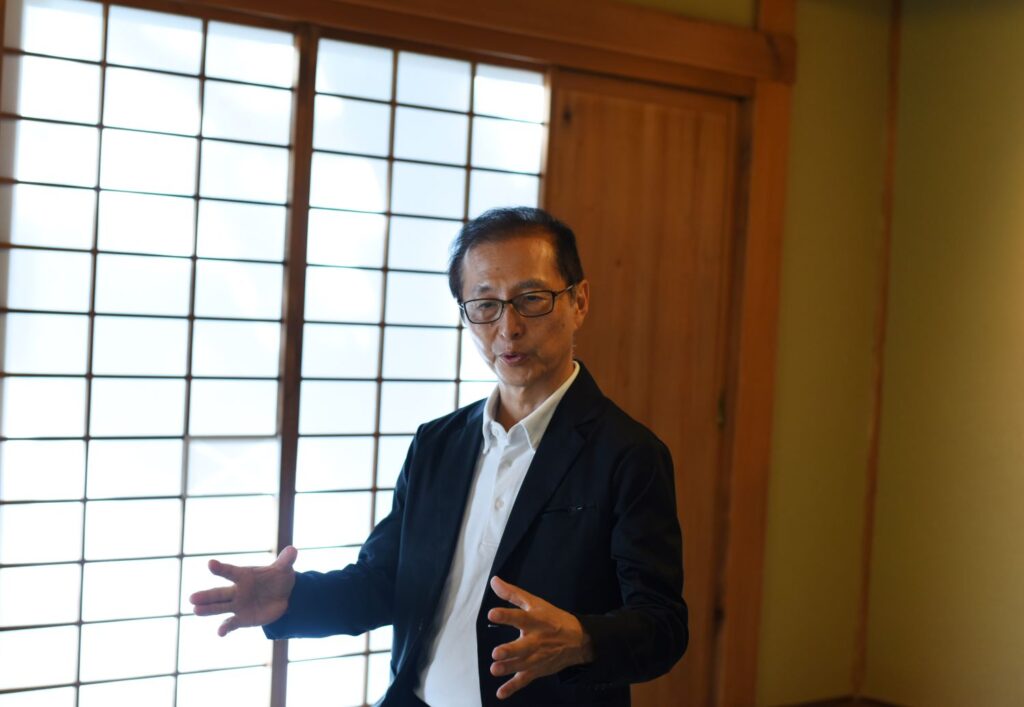
(Click here for the second part)
Interviewed and edited by: MIYAUCHI Toshiki
Written by: HOSOTANI Kana
Photographed by: MOCHIZUKI Sayaka
*These photos were with permission.


